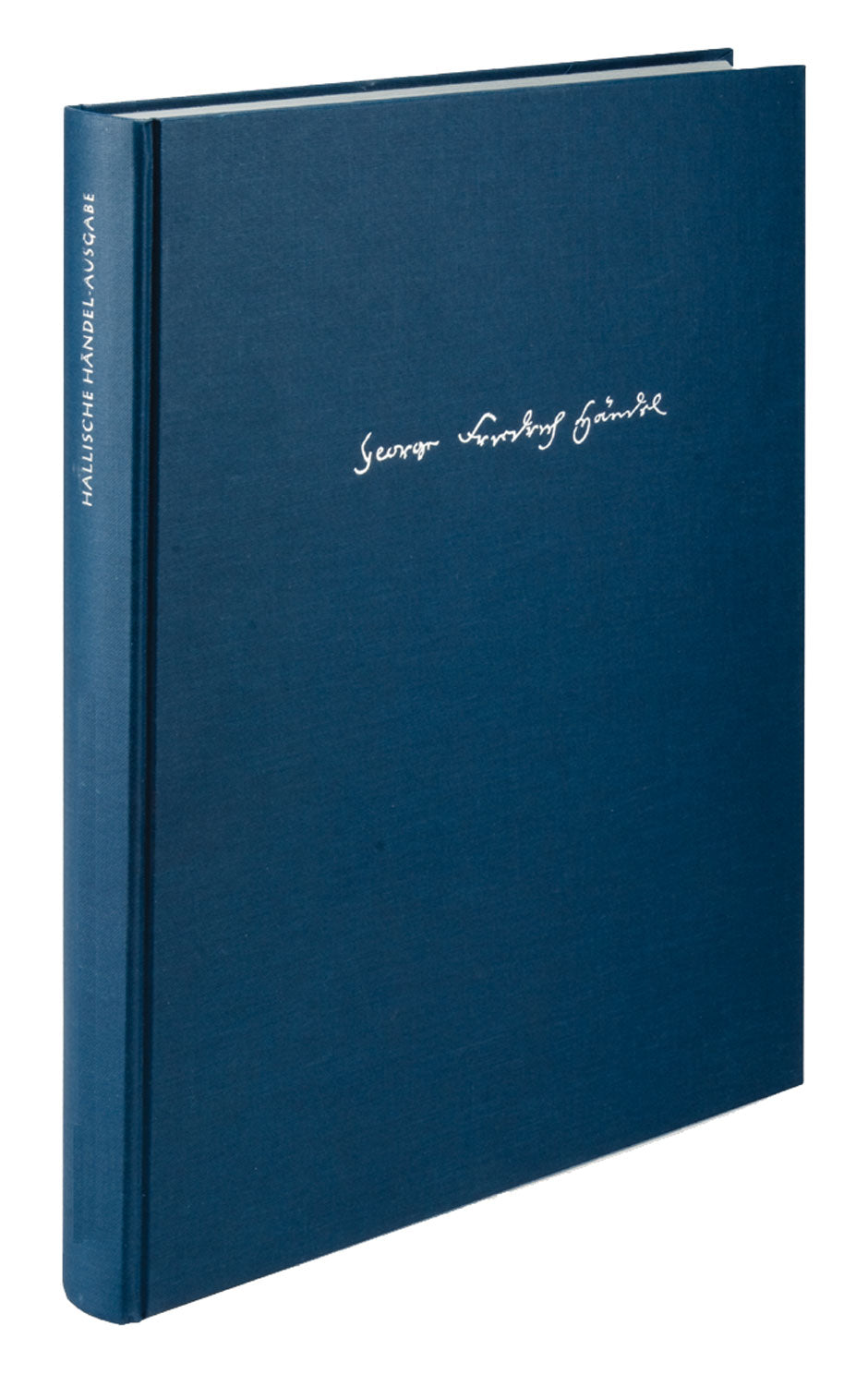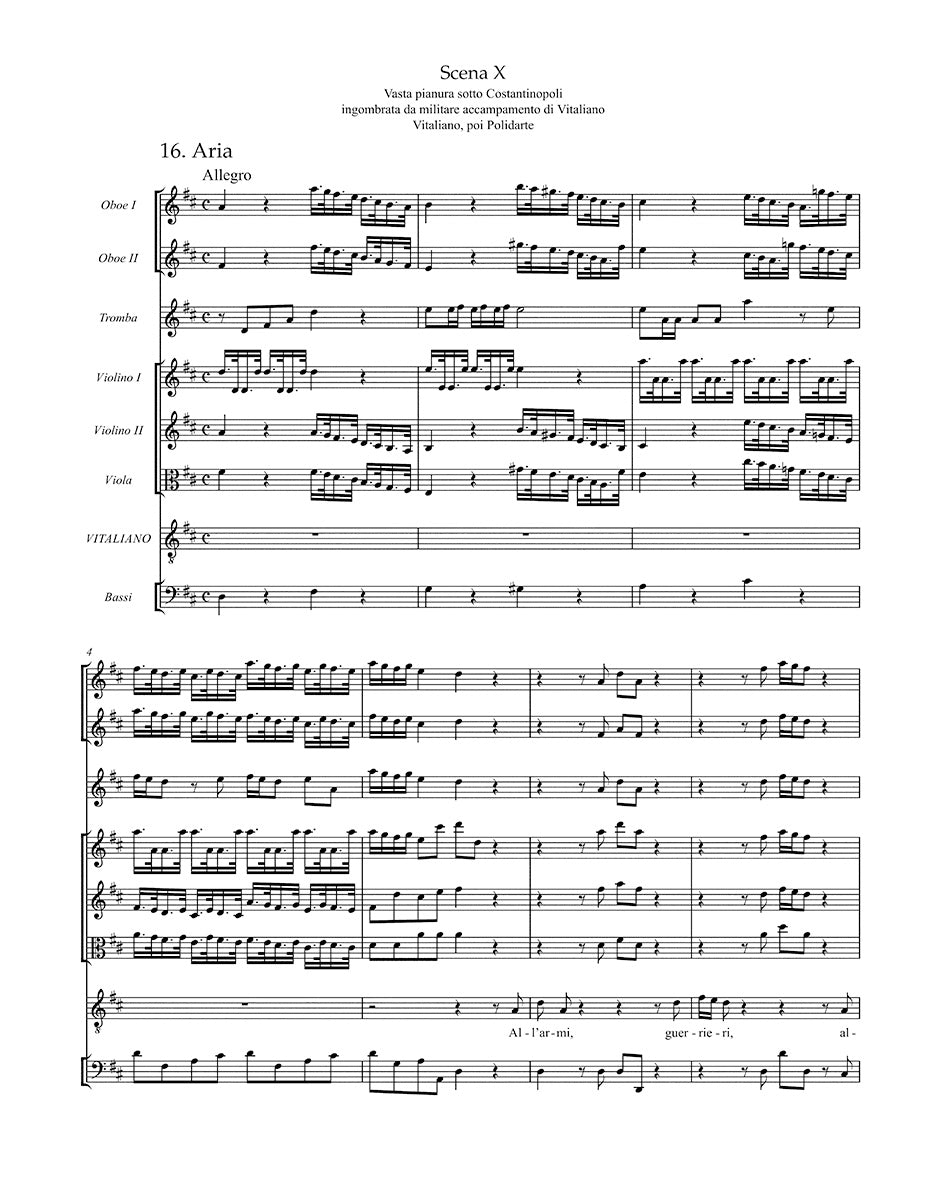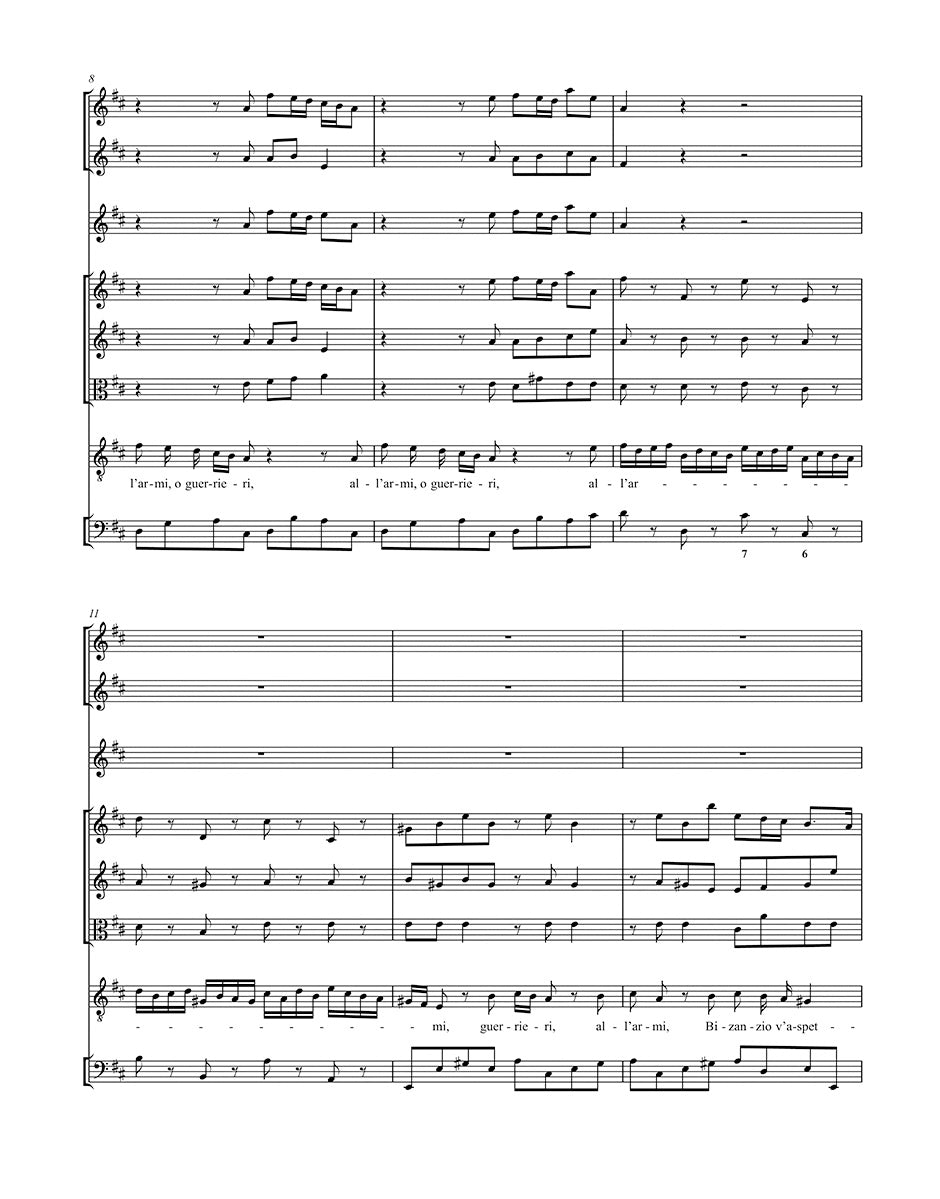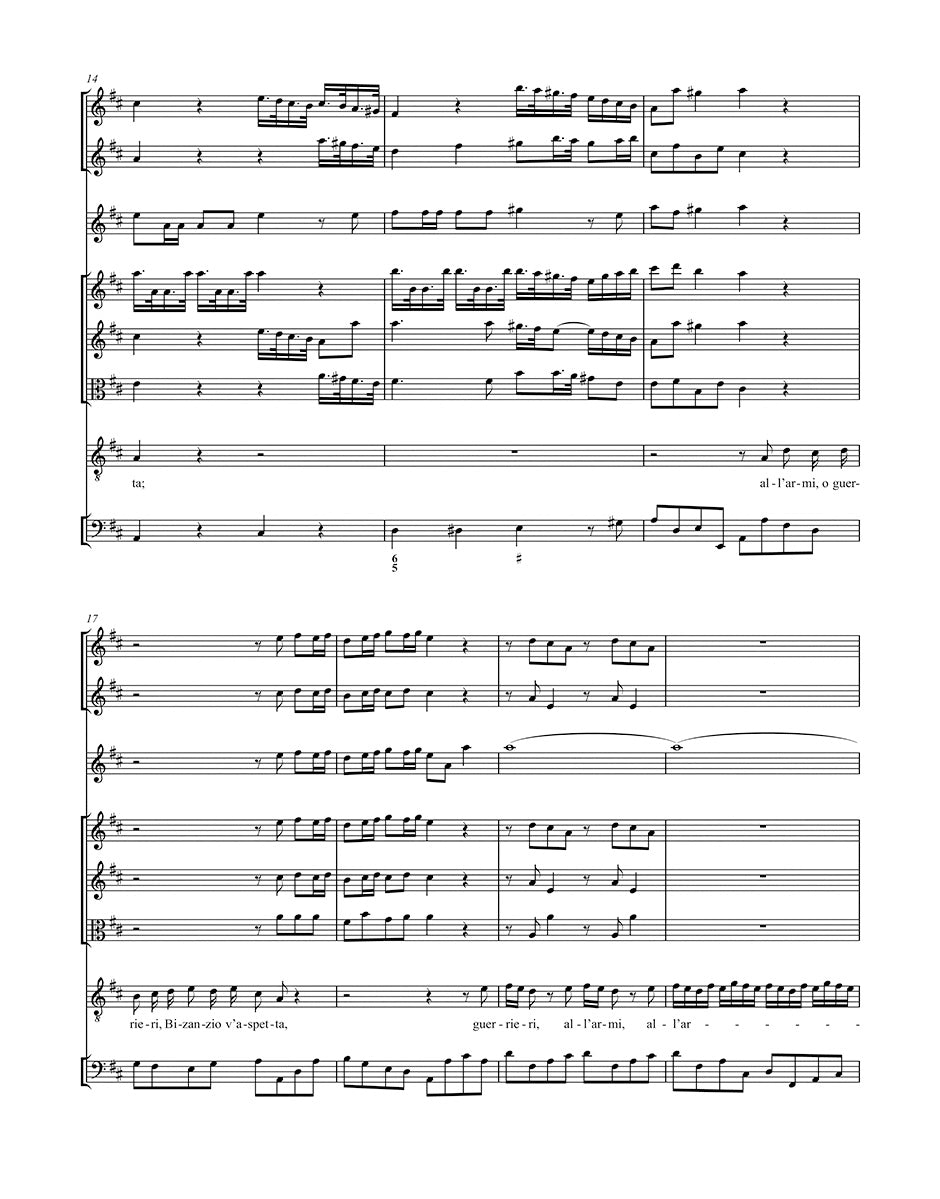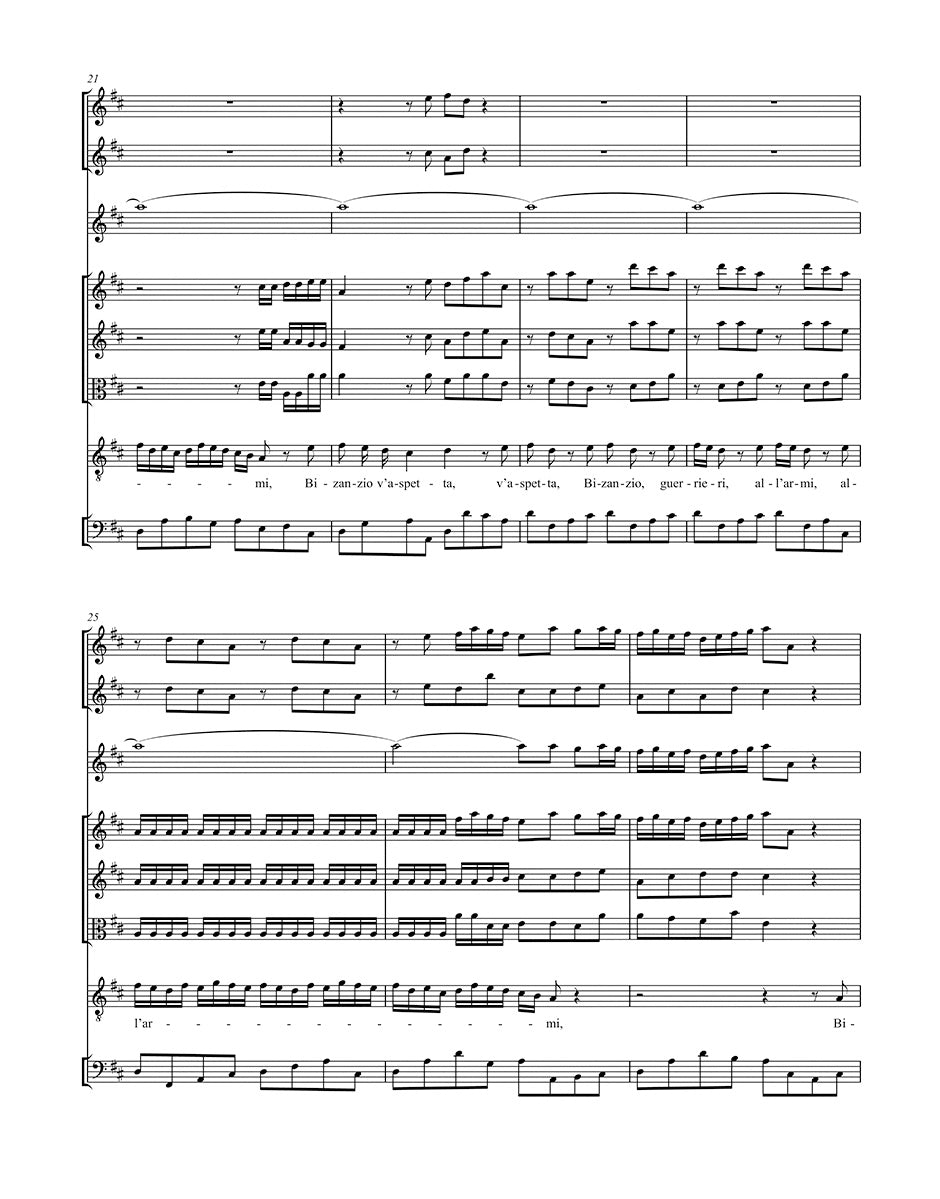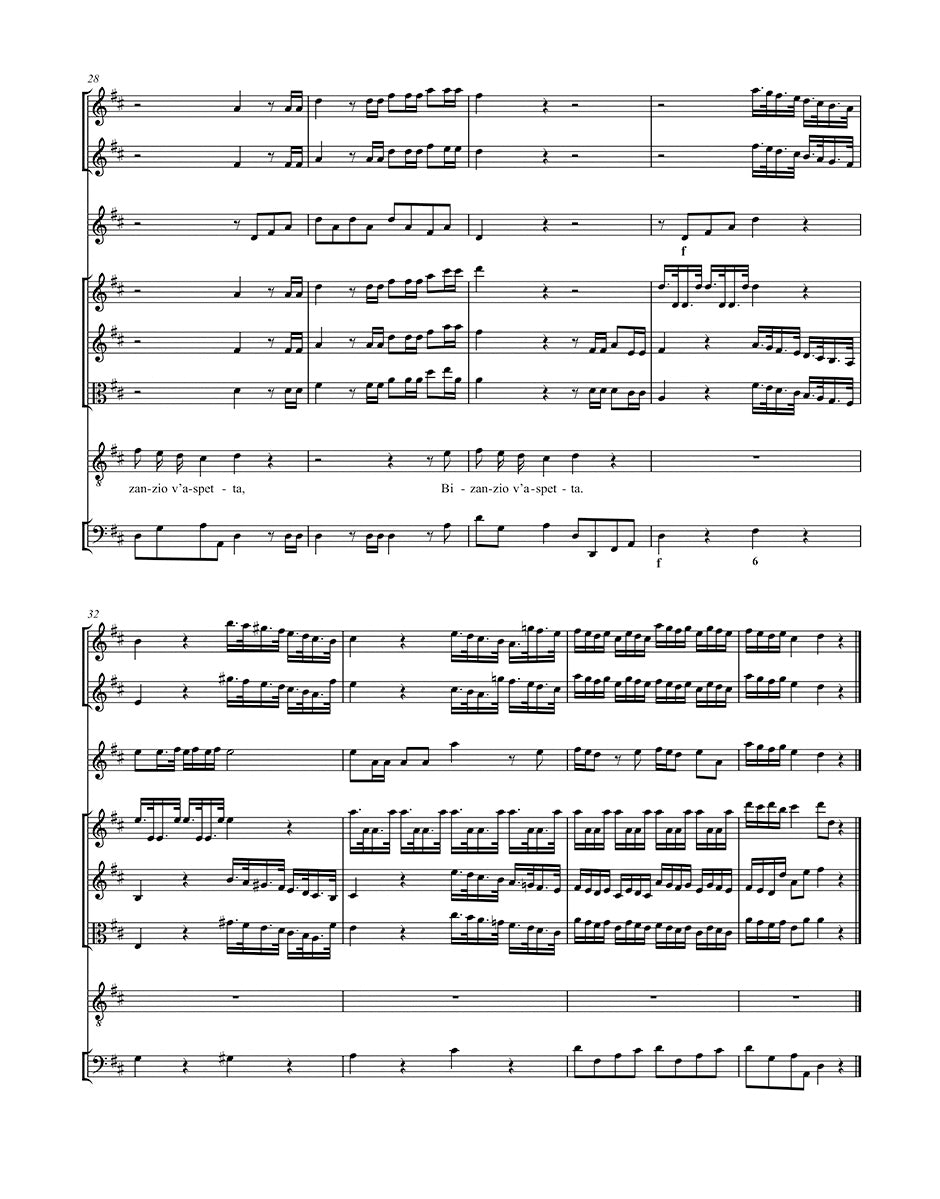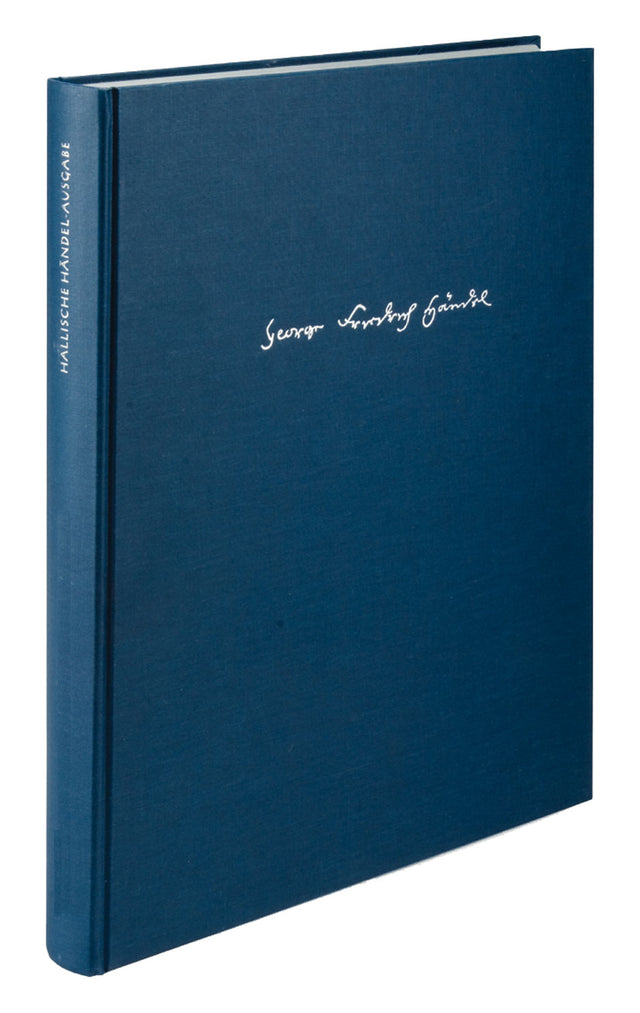Handel: Giustino, HWV 37
Expected to ship in about a week.
- Composer: George Frideric Handel (1685-1759)
- Editor: Wolfgang Hirschmann
- Format: Full Score – Complete Edition
- Instrumentation: Opera
- Work: Giustino, HWV 37
- Binding: Hardcover
- ISMN:
- Size: 10.2 x 13.0 inches
- Pages: 296
Description
In the fourth volume of his "General History of Music", Charles Burney's verdict on Handel's "Giustino" was as enthusiastic as it was prophetic: "Upon the whole, this opera, so seldom acted and so little known, seems to me one of the most agreeable of Handel's dramatic productions". in it, wondrous things happen: a peasant's son falls asleep while ploughing and is called upon in a dream by the goddess of fate to leave his ancestral clod and follow his true heroic destiny. No sooner has he set off than a princess appears, pursued by a bear. Giustino (the young man's name) kills the beast and rescues Princess Leocasta, who immediately falls in love with him and invites him to her palace. There, the Byzantine Emperor Anastasio is preparing to fight the rebellious troops of Vitaliano; his wife Arianna follows him into battle and is captured. Now it is up to Giustino to defeat the usurper and save the empress from a sea monster that is threatening to devour her, chained to a rock by Vitaliano's henchmen. Giustino also passes this test, and we have now only reached the beginning of the second act of a fairytale-like, fantastic and effective stage plot, at the end of which the peasant's son turns out to be a noble prince, and an evil schemer named Amanzio – a kind of Iago of the Baroque opera – finds his just punishment.
The world premiere of this opera took place on February 16, 1737 at the Covent Garden Theatre. Handel's music, which he wrote for the dramma per musica "Giustino", is as colourful, rich and opulent as the plot. He not only mobilized a wealth of stage effects, but also brought to the music large ensembles – trumpets, horns, oboes, recorders – and choral movements, with accompagnati, echo effects and incidental music. in doing so, he created musical complexes that spanned multiple scenes, the likes of which are only really known from operas of the second half of the century: the fourth to seventh scenes of the first act are presented in a continuous alternation of accompagnati, arias, choruses, sinfonias and simple recitatives – a musical-dramatic masterpiece.
The historical-critical edition of the opera in the Halle Handel Edition is intended to help bring this "most agreeable" work closer to a contemporary audience. The main part of this volume reproduces the version of the premiere in its entirety for the first time and offers the opportunity to become acquainted with the first version in an appendix. It is somewhat more concise and compact, but above all dramaturgically more stringent than the version that was then heard on the London stage. for today's performers, both versions offer rich material for exciting productions, which may help this great heroic legend – aptly characterized by Anthony Hicks as a "theatrical extravaganza" – to become increasingly popular.
Publishers use a lot of words to describe what they sell, and we know it can be confusing. We've tried to be as clear as possible to make sure you get exactly what you are looking for. Below are descriptions of the terms that we use to describe the various formats that music often comes in.
Choral Score
A score for vocalists that only contains the vocal lines. The instrumental parts are not there for reference. Generally, cheaper than a vocal score and requires multiple copies for purchase.
Facsimile
Reproductions of the original hand-written scores from the composer.
Full Score
For ensemble music, this indicates that the edition contains all parts on a single system (there are not separate parts for each player). In larger ensembles, this is for the conductor.
Hardcover
Hardbound. Generally either linen-covered or half-leather.
Orchestral Parts
Similar to a wind set, this is a collection of parts. In the case of strings, the numbers listed are the number of copies included, though generally these are available individually (often with minimum quantities required).
Paperback
When publishers offer multiple bindings (e.g. hardcover) or study scores, this is the "standard" version. If you're planning to play the music, this is probably what you want.
Performance / Playing Score
A score of the music containing all parts on one system, intended for players to share. There are not separate parts for each player.
Set of Parts
For ensemble music, this indicates that there are separate individual parts for each player.
Solo Part with Piano Reduction
For solo pieces with orchestra, this is a version that contains a piano reduction of the orchestra parts. For piano pieces, two copies are typically needed for performance.
Study Score
A small (think choral size) copy of the complete score meant for studying, and not playing. They make great add-ons when learning concertos and small chamber works.
Vocal Score
A score prepared for vocalists that includes the piano/organ part or a reduction of the instrumental parts.
Wind Set
For orchestral music, this is a collection of wind and percussion parts. The specific quantities of each instrument are notated.
With Audio
In addition to the printed music, the edition contains recordings of the pieces. This may be an included CD, or access to files on the internet.
With / Without Fingering (Markings)
Some publishers prepare two copies - a pure Urtext edition that includes no fingering (or bowing) suggestions and a lightly edited version that includes a minimal number of editorial markings.

